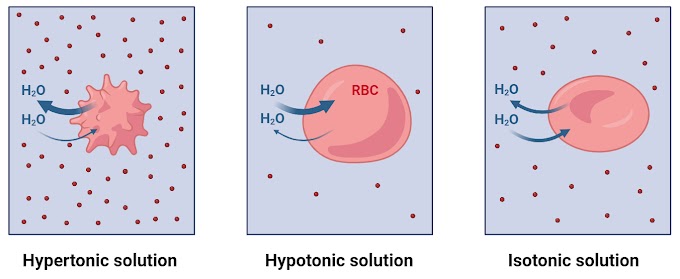Genotype
A genotype is the complete set of genes or genetic instructions carried by an organism. It specifically refers to the alleles (variants of a gene) present at a particular genetic locus. The genotype determines the potential traits that an organism can inherit and express.
Think of the genotype as the genetic code or blueprint written in DNA. It may not always be visible but forms the basis for an organism’s characteristics.
Each gene has different forms called alleles. An organism inherits two alleles for each gene, one from each parent.
Examples of Genotype
TraitPossible Genotypes Phenotypes Eye Color (simplified) BB, Bb, bb BB/Bb = Brown, bb = Blue Pea Plant Height TT, Tt, tt TT/Tt = Tall, tt = Short Blood Type AA, AO, BB, BO, AB, OO AA/AO = A, BB/BO = B, AB, OO = O |
|---|
Importance of Genotype
1. Inheritance and Variation
Genotypes determine how traits are passed from parents to offspring and explain genetic variation.
2. Medical Relevance
Genotyping helps identify risks for genetic diseases (e.g., BRCA1/BRCA2 in breast cancer).
3. Selective Breeding and Agriculture
Desired genotypes are selected to improve crop yield, disease resistance, etc.
4. Evolution and Natural Selection
Genetic variations (mutations) contribute to evolutionary changes.
The genotype is the hidden foundation of an organism’s biology. It carries the potential for all traits, even if they are not visibly expressed. Understanding genotypes is crucial in biology, medicine, agriculture, and evolutionary science.
Phenotype
A phenotype is the observable physical, biochemical, or behavioral traits of an organism. It results from the interaction between its genotype and the environment.
In simpler terms, the phenotype is what we can see or measure—like eye color, height, or even blood type.
These traits can be physical (e.g., height, eye color, skin pigmentation), biochemical (e.g., blood type, enzyme activity), and behavioral (e.g., mating calls in birds, aggression in animals).
Examples of Phenotype
Trait Phenotype Example Notes
Eye Color Brown, blue, green Determined by multiple genes
Plant Height Tall or short May vary depending on sunlight or nutrients
Blood Type A, B, AB, or O Determined by genotype (AA, AO, etc.)
Factors Affecting Phenotype
- Environmental Factors: Phenotype is often influenced or modified by environmental factors, including, nutrition (e.g., poor diet affecting height), climate (e.g., fur color in cold vs. warm areas), health conditions, and stress or trauma.
- Genetic Factors (Genotype): Determine the potential range of traits (e.g., height, color, behavior).
- Environmental Factors: Nutrition, climate, exposure to toxins, social environment. Example: A person may have genes for tall stature, but poor nutrition during growth years can limit their height.
- Epigenetic Factors: Modifications that affect gene expression without changing the DNA sequence (e.g., methylation, histone modification).
The phenotype is the visible outcome of genetics interacting with the environment. It is essential for understanding how organisms look, behave, and function. Studying phenotypes helps us in evolutionary biology, medicine, breeding, and genetics.
Difference between Genotype and Phenotype
1. Definition
Genotype is the genetic makeup of an organism. It refers to the specific sequence of DNA (especially the alleles) inherited from parents.
Phenotype is the observable characteristics or traits of an organism. It is how the genotype is expressed, often influenced by the environment.
2. Nature
Genotype is internal – it’s the underlying genetic code.
Phenotype is external – it’s what we see or measure.
3. Expression
Genotype includes homozygous dominant (e.g., AA), heterozygous (e.g., Aa), and homozygous recessive (e.g., aa).
Phenotype includes physical traits like eye color, height, flower color, biochemical traits like blood type, enzyme activity, and behavioral traits like nest-building in birds.
4. Influence
Genotype is fixed at fertilization and not changed by the environment. Phenotype can be influenced by environmental factors such as nutrition, climate, stress, and exposure to chemicals or sunlight. Example: A plant may have the genotype for tallness (TT), but if grown without enough water or nutrients, it might still be short phenotypically.
5. Heritability
Genotype is inherited from parents and passed to offspring. Phenotype is partially inherited (through genotype) but also shaped by the environment.
6. Detectability
Genotype requires molecular tools (e.g., DNA sequencing, PCR) to be identified. Phenotype can be observed directly or measured using physical, chemical, or behavioral assessments.
8. Real-Life Analogy
Think of genotype as the blueprint of a house (the plan). Phenotype is the actual house built, which may differ based on available materials (environmental factors) and how the construction happens.
Conclusions
While genotype provides the genetic potential, phenotype is the actual outcome of that potential. The interaction between genes and environment makes each living being unique. Understanding both is crucial in genetics, evolution, medicine, and agriculture.
Short Questions and Answers
1. What is a phenotype?
A. A phenotype is the observable traits or characteristics of an organism, such as height, eye color, or behavior.
2. What factors influence a phenotype?
A. A phenotype is influenced by both genotype (genetic makeup) and environmental factors like nutrition, climate, or lifestyle.
3. Give one example of a phenotype.
A. Brown eyes in humans is an example of a phenotype.
4. How is phenotype different from genotype?
A. Genotype is the genetic code (alleles), while phenotype is the visible or measurable expression of that code.
5. Can two individuals have the same phenotype but different genotypes?
A. Yes, for example, both BB and Bb genotypes can result in a brown-eyed phenotype.






0 Comments